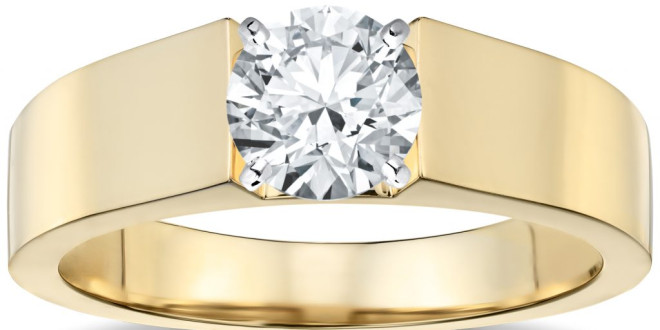[ad_1]
There are various different materials used for wedding rings, this article examines each material and its wearability rate.
1. Silver – A relatively inexpensive semi-precious white metal, reasonably soft and ductile and popular with men both as a fashion item and less so as a wedding ring. It does not resist scratching well and has a tendency to wear thin in time.
Another feature of silver is its reactivity with the acid in human sweat which tends to turn it black, although this tarnishing effect is easily removed.
2. Gold. 9 carat gold – fast becoming out of vogue with consumers in the UK in favour of 18 carat gold due to its low content of pure gold (37.5%). The low gold content also accounts for its paler yellow colour and in the case of 9 carat white gold, its whiter colour is due to the addition of silver.
As with silver, 9 carat gold is prone to tarnishing but is arguably harder and more durable than 18 carat gold. Even so, it will not resist scratching well and, like silver, 9 carat and 18 carat gold will wear thin in time.
22 carat gold is also an alternative for wedding rings and is heavily favoured by Indian and Asian cultures.
3. Titanium. A recent newcomer to the wedding ring market, especially to the UK, Titanium is fast becoming the material of choice for the male market. Contemporary, modern designs coupled with strength and durability make rings from this metal the choice for discerning jewellery buyers.
Often mistaken as an indestructable metal, Titanium is in fact quite soft but extremely tough. It will take on small rub marks quite quickly but will resist deformation due to abuse or accidents and will not wear thin like precious metals. As with the majority of metals, with perhaps the exception of Tungsten, Titanium rings, if polished, will dull down, if satin, will brighten up and in time both finishes will meet somewhere in the middle.
4. Stainless Steel – Not as popular a metal worn as a wedding ring but still gaining recognition. About twice the weight of Titanium, and a highly durable material also. High resistance to deformation and wearing thin over long periods of time but, as with all metals will show signs of scratching.
5. Zirconium. Also a newcomer. As the sister metal to Titanium, Zirconium has all the same qualities – hypoallergenic, lightweight, strong, but with the added advantage that, when heat treated, forms a silky black, ceramic like, sapphire hardness oxide coating, Although extremely resistant to scratches, because of the soft material under the coating, dents will appear on the ring. The coating will resist chipping but you should be aware that scratches will eventually appear on the ring in time.
6. Tungsten. Yet another newcomer. Very hard, scratch resistant and durable and should retain its appearance for many years. The major disadvantages being that resizing is only possible by making the ring larger by remachining the bore using very specialist equipment and in the event that the ring has to be removed in an emergency, breaking the ring off is the only option and so destroying the ring.
7. Palladium. Not a newcomer but originally popular just after the 2nd World War. Palladium is in the same group of elements as platinum with practically the same look and whiteness but at a fraction of the cost. Durability wise – about the same as Titanium. The main disadvantage at the moment is the shortage of manufacturers producing rings from this material.
8. Platinum. The wedding ring equivalent of Royalty. Extremely expensive at the moment of writing but has gained a lot of popularity of late. Probably the whitest of all the wedding ring materials with the durability, once again, of Titanium.
[ad_2]
Source by Alan Hadley

